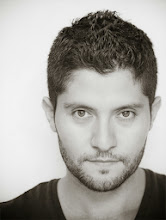There is not much intended in this picture, but mood. Shot with almost no light left. Long exposure on a tripod f11. You can see the effects of the long exposure on the water closest to the the lens (the misty/flow effect), but not so much on the one further down. Click on the image to view in more detail.
Extra tip: Talking about late long exposures. Aside from what many photographers call "the golden hour" for taking photos. There is a lesser explored "hour" referred often as "The Blue Hour". This happens some time between the golden hour and total darkness. It usually renders very deep blue skies, but it could sometimes be hard to see (very obviously anyway). Cameras can sometimes catch light that our eyes have trouble adjusting too. Mostly due to the ability to have longer exposures. A city scape is a good example of where a blue hour photo will be well suited. You get the lights from the buildings and a rich deep blue sky. Does not hurt to try. And if you are wondering how do I know when the blue hour is? (which is not a whole hour by the way, more like 15-20 minutes). You can go to a very handy website www.bluhour.com that tells you exactly when it starts and ends depending on your location. The website also offers samples.







